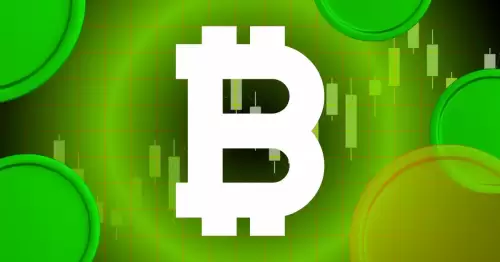 |
|
 |
|
 |
|
 |
|
 |
|
 |
|
 |
|
 |
|
 |
|
 |
|
 |
|
 |
|
 |
|
 |
|
 |
|
Cryptocurrency News Articles
USDD, TRON, and Cross-Chain Dynamics: A Stablecoin Under Scrutiny
Jul 25, 2025 at 07:57 pm
Analyzing USDD's journey on TRON, its cross-chain integrations, and recent concerns over centralization and governance.

USDD, TRON, and Cross-Chain Dynamics: A Stablecoin Under Scrutiny
USDD, TRON's stablecoin aiming for decentralized finance (DeFi) prominence, faces both milestones and scrutiny. From hitting six months on the TRON blockchain to concerns about centralized control, let's dive into the USDD universe.
USDD 2.0: Six Months and Counting
USDD 2.0 recently celebrated its six-month anniversary on the TRON blockchain. Overseen by the TRON DAO Reserve, the initiative aims to build a robust DeFi framework by focusing on scalability and price stability. Strategic improvements in liquidity, governance, and cross-chain compatibility enhance its utility for DeFi users and everyday folks alike. The protocol emphasizes transparency and community governance, letting stakeholders influence decisions like reserve adjustments and smart contract upgrades, aligning with the industry's shift towards trustless systems.
Integration with Ethereum and Binance Chain has boosted liquidity, reducing risks and improving resilience against market swings. USDD 2.0 uses dynamic collateral and secure liquidation mechanisms, setting it apart from earlier stablecoin attempts. A recent smart contract audit also reinforced transparency and security, addressing concerns about operational resilience. USDD 2.0's focus on cross-chain transfers positions it to capture demand from decentralized trading platforms and cross-border payments.
Centralization Concerns: The SA001-A Vault
However, recent developments have raised eyebrows. The activation of the SA001-A vault, dubbed the ‘Smart Allocator,’ and its rapid accumulation of around $260 million in digital assets—61% of USDD's collateral—is causing concern. The kicker? All funds in the vault originate from HTX, an exchange strongly linked to Justin Sun. This revelation, highlighted by Protos' investigation, reignites worries about opaque governance and centralized control within the USDD ecosystem.
While DeFi vaults should be governed by community votes and transparency, the SA001-A vault was created without any public vote or external oversight, with funds coming from a single, Sun-linked source. This raises concerns about manipulation and control. Despite official documentation promising a ‘community-based, transparent and decentralised’ governance system, there are no public votes or registered proposals related to the creation of vault SA001-A.
The Justin Sun Factor
The concentration of power is a major issue. Justin Sun's involvement in TRON, JustLend, HTX, and USDD creates a situation where he controls every aspect of the ecosystem. This, combined with the lack of DAO voting, undermines any claims of decentralization and transparency, making USDD dependent on non-public decisions and unverifiable funds.
The fact that 61% of USDD’s collateral is concentrated in a single vault, indirectly controlled by Sun, poses a significant systemic risk. If HTX faces liquidity issues or suffers an attack, the entire USDD ecosystem could be in trouble.
Cross-Chain Developments and Market Dynamics
Despite the concerns surrounding centralization, the broader landscape of blockchain technology continues to evolve. Projects like Zircuit are developing AI-driven trading engines to enable real-time, cross-chain execution across EVM and Solana ecosystems. This aims to streamline automated trading through advanced signal detection and security protocols, potentially reducing barriers for institutional and retail traders navigating multi-chain environments.
The Future of USDD
USDD's journey is a mixed bag. While it shows promise in cross-chain integrations and stablecoin functionality, the centralization issues need addressing. As the crypto space matures, transparency and community governance will be key for stablecoins like USDD to thrive. Whether USDD can navigate these challenges remains to be seen, but one thing's for sure: it's a wild ride in the world of DeFi!
Disclaimer:info@kdj.com
The information provided is not trading advice. kdj.com does not assume any responsibility for any investments made based on the information provided in this article. Cryptocurrencies are highly volatile and it is highly recommended that you invest with caution after thorough research!
If you believe that the content used on this website infringes your copyright, please contact us immediately (info@kdj.com) and we will delete it promptly.






























































